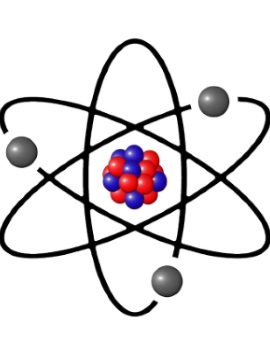Radiometric Dating Methods
James C. Rocks
Despite creationist claims to the contrary, radio-isotopic dating methods are accurate to within acceptable limits. The most common claim (aside from references to experiments where a given dating method was demonstrated as fallible) is that a given method's assumptions may have been violated. Typically, these revolve around the constancy of decay rates and claims that contamination may have occurred.


Discussion
Radiometric dating works by comparing the amount of radioactive parent material present in a rock sample to the amount of daughter material, a ratio that is the direct result of the parent material's decay. Based on standard decay rates for a known isotope (parent) it is then possible to estimate how long ago the rock was formed.
The rate of decay for any given isotope is considered to be fundamental and significant changes in any isotopic decay rate have never been observed (to an accuracy of about one part in 1011 per year). However, in order to explain flood-based geology and/or a young earth (approx. 6000 years), the rate of decay of such elements would need to be in the order of six to ten times as high as have been noted. Exactly how much higher would depend upon whether age is measured from the flood itself or across the entire young earth scenario.
Typical creationist claims are that radiocarbon and other methods based on radioactive decay rates are invalid because:
- The system is closed and no radioactive parent or daughter enters or leaves it.
- There is no radiogenic daughter in the system to begin with.
- There is no proof that the rate of decay is constant.
- Increased radii of celestial bodies such as Mercury, the Moon or Mars.
- Changes in Moon & Earth orbits.
- Long-lived isotopes that decay by beta decay (e.g. Rhenium 187, Potassium 40 & Rubidium 87) in comparison to isotopes that decay by different mechanisms.
Conclusion
Radiometric observations are a mixture of sensitive, short time-scale, tests (near past but accurate) and astronomical observations (distant past, less precise). Contamination is an issue for Carbon 14 and Potassium-Argon dating methods however criticism of such methods fail to take into account that data from these nearly always agrees with current expectations for old-Earth dating. Any single experimental result may be subject to criticism but an entire battery of tests, each of which tends to support the data from others, is not easy to refute.
For one moment let us assume that creationists are correct and that the evidence derived from the fossil record, the geologic column and radiometric dating were all wrong. Quite apart from highly noticeable changes in planetary orbits, increased planetary radii etc. it would seem that the various companies involved in mineral (esp. fossil fuels) exploration and exploitation are all looking in the wrong places … no company will search for coal in rocks dated older than when plants evolved., there would be no point! The simple search for such fossil fuels involves the acceptance of radiometric dating, fossil record and geologic column … to do otherwise in such a competitive business would be pointless and tantamount to cutting one's own financial throat!
Perhaps then, in order to further demonstrate evidence for their young Earth hypothesis creationists would be willing to cite any company listed on the stock exchange which uses creationist ideas to predict mineral occurrence?
Sceptics (creationist or otherwise) of conventional geologic science might assume scientist would prefer all acquired dates to be consistent within the current geological time scale but, realistically, this is not how science works. Science is, by its very nature, tentative and nothing in science is proven beyond shadow of doubt. The age of any given sample and the geological time scale only represents the current understanding and science is constantly in a process of refinement of that understanding.
There is an unmistakable trend of smaller and smaller revisions of the time scale as the dataset gets larger and more precise (Harland et al. 1982, p.4-5). If something were seriously wrong with the current geologic time scale, one would expect inconsistencies to grow in number and severity, but they do not.
The evidence against a Young Earth (some 6000 to 10,000 years old) is available in any library and the arguments of creationists will not stand scrutiny if pursued.
References
- "Information for all biologists" Dr Morden, 1996
- "Society Of Vertebrate Palaeontology" 1994
- "Rejoinder to Cliff Hanlon's "Three R's"", Dave E. Matson, 1998
- "Young Earth" Colin Groves
- "Posting by John Stear (No Answers In Genesis)" John Stear, 1999
- "Radiometric Dating and the Geological Time Scale; Circular Reasoning or Reliable Tools?" Andrew MacRae, 1998
- "The Age of The Earth", Chris Stassen 1997
- "Isochron Dating" Chris Stassen, 1998